The best orthopedic traumatologist of the knee joint. What does an orthopedic surgeon treat? Diagnosis and selection of treatment for diseases of the musculoskeletal system
Ours is a clinical base of the First Moscow State Medical University them. Sechenov. Therefore, in our clinic for services traumatologists-orthopedists state prices!
Our services for orthopedics and traumatology in Moscow:
- Treatment of dislocations and subluxations.
- Sprains and fractures.
- Arthritis and arthrosis.
- Joint prosthetics.
- Joint operations (arthroscopy) using German equipment from Karl Storz.
- And much more at government prices!!!
Consultation every Tuesday traumatologist-orthopedist Professor Ivannikov S.V. We use high-tech and innovative software methods on the latest Karl Storz, Yerbe devices. During the operation, an intra-articular injection of plasma is performed. Our patients can go home the next day.
We have established state-owned ones, which makes our services available to all residents of Moscow.
Our clinic of traumatology and orthopedics deals with the diagnosis and treatment of diseases of the musculoskeletal system. Our specialists, based on an understanding of the work of the skeletal and muscular systems of the body, confidently and effectively use the latest achievements. modern science in the treatment of injuries of various origins, as well as other injuries of the musculoskeletal system.
Medical assistance in the field traumatology and orthopedics in Moscow is situated on high level. However, not all clinics can afford to use the best devices and instruments. Equipping our clinic with the most modern equipment allows our doctors to perform the most complex manipulations on the joints, ligaments, bones, as well as perform joint arthroplasty.
Usage the latest technologies in orthopedics and traumatology allows us to achieve excellent functional results, allows us to shorten the rehabilitation period after major operations and, of course, improve the quality of life of our patients.
Excellent equipment is a minor part of a successful treatment. For patients to be 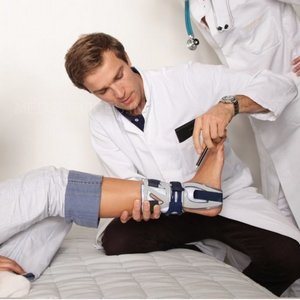 Satisfied with the result, qualified doctors are required. Our traumatologists-orthopedists are doctors who do not need advertising. They have thousands of operations performed and more than one decade of practice. We work:
Satisfied with the result, qualified doctors are required. Our traumatologists-orthopedists are doctors who do not need advertising. They have thousands of operations performed and more than one decade of practice. We work:
Doctor of Medical Sciences, professor, traumatologist-orthopedist.
Surgeon, assistant of the department of PMSMU named after A.I. Sechenov, head of the outpatient surgical department at DCC No. 1.
Our traumatologists-orthopedists are known not only in Russia, but also in the post-Soviet countries. They not only successfully use the achievements of modern medicine, but are themselves developers of various methods in the field of traumatology and orthopedics.
A person with various congenital and acquired diseases of the musculoskeletal system may receive a referral to doctors of several specialties. It can be a surgeon, traumatologist, orthopedist. And sometimes the patient is advised to consult an orthopedic surgeon. Who is this and how does he differ from other specialists?
What is orthopedics
Orthopedics is a special branch of surgery that deals with joints, ligaments, tendons and skeletal muscles. Moreover, these are persistent and long-lasting. They can be the result of malformations, neurological pathology, trauma and various diseases.
Since orthopedics is related to surgery, specialists of this profile, after completing the basic program at medical institutes (universities), undergo mandatory additional training in surgery and specialize in orthopedics. Postgraduate training can take place as part of an internship or residency, depending on the chosen medical and educational base.
Thus, the orthopedist initially has surgical training, which is superimposed by deeper highly specialized skills.
In the process of subsequent work, orthopedists periodically undergo refresher courses, which allows them to update their knowledge and confirm the right to conduct medical practice.
Surgeon and orthopedist - is there a difference?
Since orthopedics is a part of surgery, many patients naturally have the question of whether a surgeon can replace an orthopedist and vice versa.
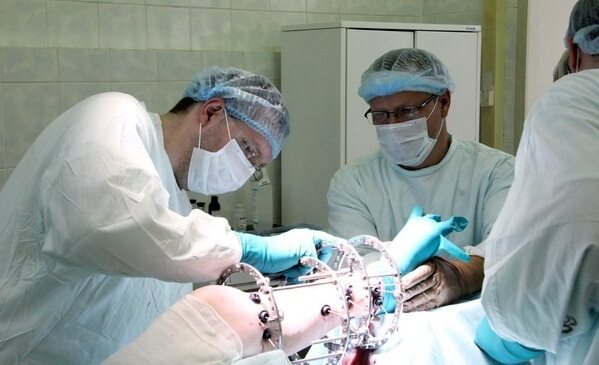
There are many directions in surgery, a doctor can deal with the treatment of strictly defined disorders. Therefore, there are specialists such as an oncologist surgeon, a gynecologist surgeon, a dental surgeon, a vascular surgeon ... And there is also a general surgery department, where patients with common diseases - appendicitis, peritonitis, peptic ulcer and other surgical problems.
A surgeon is a specialist who has basic skills in treating various diseases with the help of operations. In this case, a scalpel or any modern methods of surgical interventions can be used.
It is important to understand that any surgeon initially undergoes basic training. It includes basic knowledge and skills in the pathology of soft tissues, internal organs, the musculoskeletal system, injuries and injuries. But changes in any system have many details that only a specialist can understand. The level of special training is what distinguishes a surgeon from an orthopedist.
Therefore, the surgeon, of course, will see the curvature and can even identify many common diseases. But for an accurate diagnosis and selection of specialized treatment, you need to consult an orthopedist, an orthopedic surgeon. And if there are consequences of injuries, it is advisable to get to an orthopedist-traumatologist.
What does an orthopedic surgeon do?
 Do not think that getting a referral to an orthopedic surgeon always means the need for surgical treatment. This specialist also owns conservative methods for correcting disorders of the musculoskeletal system. And sometimes up to 50% of his work is non-operative impact on the disease.
Do not think that getting a referral to an orthopedic surgeon always means the need for surgical treatment. This specialist also owns conservative methods for correcting disorders of the musculoskeletal system. And sometimes up to 50% of his work is non-operative impact on the disease.
What does an orthopedic surgeon do? Here's what's in his arsenal:
-
spine surgery, including using modern minimally invasive techniques;
-
surgery tubular bones(forming the basis of the skeleton of the limbs), including the use of pins, external fixation devices and other devices;
-
plastic surgery on ligaments, tendons and muscles with contractures and paralysis;
-
the use of corrective stage plaster bandages, plaster beds;
-
various orthopedic devices (insoles, corsets, special footwear, splint sleeve devices);
-
joint arthroplasty;
-
physiotherapy, basics sports medicine, kinesiotherapy;
-
various methods of physiotherapy;
-
skeletal and skin traction, including underwater techniques.
The doctor chooses the scheme of patient management and used surgical and conservative methods of treatment individually. Any surgical intervention in this case is necessarily supplemented by a complex of conservative rehabilitation measures. This not only helps to shorten the recovery period, but also improves the outcome of the operation.
How is the consultation
At the appointment with an orthopedic surgeon, you should not wait for the immediate start of treatment. The doctor initially determines what changes the patient has, how pronounced they are. It is also important to assess the degree of impairment of motor functions and the persistence of symptoms.
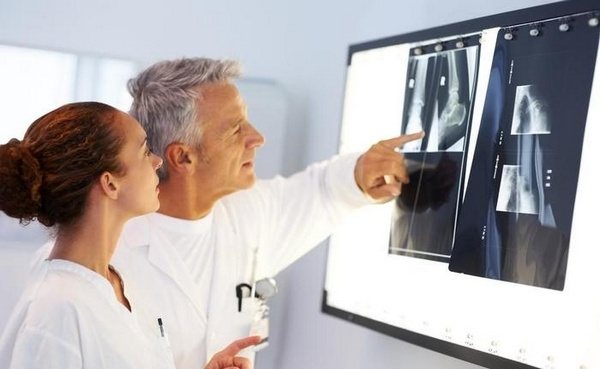
It is advisable for the patient to bring with him the available medical documents:
-
hospital discharges,
-
outpatient card,
-
survey data.
If X-ray studies, CT scans were previously performed, you need to take not only the conclusion (description), but also pictures. This will allow the orthopedist to assess the dynamics of the disease.
The doctor will conduct an external examination, combined with the performance of certain tests. Be sure to check the symmetry of the body and limbs, the volume of active and passive movements in all joints, the presence of visible deformities. When examining the back, the position of the shoulder blades and shoulder girdle, the severity of curvature in different parts of the spine, the position of the pelvis, the presence of muscle atrophy or areas of muscle tension are assessed.
 On the legs, the position of the feet, the condition of their arches, signs of changes in muscle tone, the symmetry of large skin folds are checked, the length of the limbs is compared. The strength of the main muscle groups is checked.
On the legs, the position of the feet, the condition of their arches, signs of changes in muscle tone, the symmetry of large skin folds are checked, the length of the limbs is compared. The strength of the main muscle groups is checked.
After collecting an anamnesis and a thorough examination, the orthopedist often recommends additional examinations.
What examination may be required
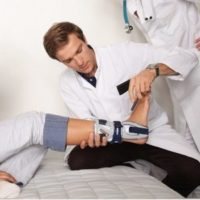 The examinations prescribed by the orthopedist depend on the clinical picture. It can be:
The examinations prescribed by the orthopedist depend on the clinical picture. It can be:
-
radiography, sometimes with contrast;
-
Ultrasound of various joints;
-
During the preparation for the operation, general clinical analyzes and examinations are carried out. This includes blood and urine tests, a biochemical blood test, an ECG, an X-ray of the chest (to rule out tuberculosis), tests for syphilis, hepatitis, and HIV.
Important is the interaction of the orthopedic surgeon with other doctors (rheumatologist, neurologist, cardiologist), which is taken into account in the joint examination of the patient before surgery. This allows us to assess the risks of complications from anesthesia and the actual surgical intervention, to draw up a preliminary program for the subsequent rehabilitation of the patient.
Does the orthopedist always observe the patient?
The patient may receive a consultation with an orthopedic surgeon, but subsequently not be observed by him constantly. The fact is that not always existing problems require highly specialized assistance. Recommendations for examination and treatment received from an orthopedist can often be taken at the place of residence, this will be controlled by the surgeon. If necessary, the patient can receive a referral for hospitalization in a specialized hospital.
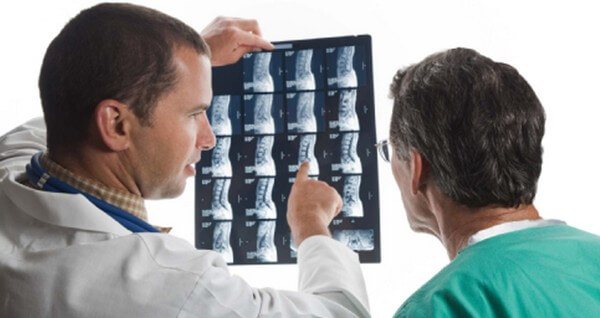
In some cases, the patient is periodically referred for a second consultation with an orthopedic surgeon. This may be necessary to monitor ongoing treatment or a routine examination before obtaining (or confirming) a disability.
Do not refuse to consult an orthopedic surgeon. This specialist will help clarify the nature of the existing changes in the musculoskeletal system, give clear recommendations and, if necessary, help to choose the right orthopedic devices.
Total hip arthroplasty has been used in the orthopedic and trauma department of MONIKI since the 1960s. The first implants were all-metal total endoprostheses designed by K.M. Sivash. We have been using cement total hip arthroplasty of European and American production since 1976. Since 1992, the use of cementless endoprostheses of foreign and domestic production began. All historical stages in the development of total hip arthroplasty are reflected in the work of our department. Total arthroplasty of the knee, shoulder and elbow joints has been used in the department since 1995. On the present stage The department performs primary and revision arthroplasty of the hip and knee joint, primary arthroplasty of the shoulder and elbow joints. Operations are performed for pathologies of the joints of any degree of complexity.
Osteosynthesis of limb bones
For the first time in Moscow (1960s), the department applied and introduced into wide practice the method of transosseous extrafocal osteosynthesis using the apparatus of G.A. Ilizarov. For the first time in the USSR (since the 1970s), the method of bone osteosynthesis with plates was introduced. Received the Prize of the Government of the Russian Federation (1996). The most common pathology is chronic fractures of the bones of the extremities, ununited fractures, "false joints", deformities of the bones of the extremities. Currently, the department performs osteosynthesis with all currently existing external and internal metal structures, from traditional, long used in practice, to the most modern - plates with angular stability of screws, intraosseous locking rods.
Arthroscopy
The department occupies a leading position in Russia in the development and implementation of high-tech arthroscopic methods for the treatment of injuries and diseases of large joints. Since the early 1990s, the department has performed reconstructive arthroscopic surgeries on the knee, shoulder, ankle and hip joints. Equipped with modern imported equipment, qualified doctors and nurses allow us to perform a wide range of interventions at the level of European and American standards. We are the authors of original, effective methods for the treatment of arthrosis of large joints, instability of the knee joint.
Cooperation with leading American and European manufacturers of equipment for arthroscopy, trauma clinics in Russia and Europe, constant participation in scientific forums allows us to offer our patients the most modern and advanced methods of reconstructive interventions.
Blood-substituting technologies
Not a single major operation in traumatology and orthopedics takes place without blood loss. Blood loss can be compensated by two methods: donor blood components or the patient's own blood. However, the widespread use of donated blood has revealed serious shortcomings associated with its use: infection with blood-borne infections (including hepatitis B and C, HIV). To replenish the blood lost during and after the operation (drainage) in the department, the following are used: preoperative preparation of the patient's own blood, collection and return of blood that has flowed into the wound during the operation, collection and return of blood that has flowed from the drains. For some patients, transfusion of donated blood components is not possible for medical or religious reasons. We use high-tech systems of foreign production. On this topic, 1 candidate and 1 doctoral dissertation was defended.
Specializes in diagnostics, preparation of a treatment plan for patients with problems of the musculoskeletal system. He widely uses functional electrical stimulation in his work, according to this method he patented two of his own methods. Author of 12 scientific and popular works.
Education and experience
Candidate of Medical Sciences. Education: internship in surgery at City Clinical Hospital No. 50 (1987); Moscow State University of Medicine and Dentistry, specialty - general medicine (1986). Author of 12 publications, holder of 2 patents on functional electrical stimulation. Medical experience since 1987.
Reviews
I want to thank Dr. Utkin A.A., orthopedic surgeon. I had a consultation with him about a hygroma on my leg. The advice is very knowledgeable. He immediately sent me for an ultrasound scan and attended the ultrasound examination himself and, together with Dr. Uzi, made a diagnosis. I got into many times
a situation where the doctor sends for an ultrasound scan, and then simply diagnoses according to the described result. At the same time, ultrasound doctors admitted that they had a poor understanding of bones or neoplasms. And they gave what description they could. In addition, I received from Utkin A.A. questions about scoliosis in a child. I will bring my child to him for a consultation. Separately, I want to say about the SM clinics on Yaroslavskaya - I read a lot of reviews about divorce for money. So far I can't agree. The consultation cost me 900 rubles, as in all centers, and 690 rubles for ultrasound, which is quite acceptable. The operation to remove the hygroma, together with tests, anesthesia, dressings, sutures and their removal, will cost about 8000 rubles. A very normal amount. I was offered earlier in other clinics for 30,000 r the same operation. Of course, you can do it cheaper in the 13th hospital, but for example, having paid about 400 rubles for a consultation, I caught the doctor for about 2 hours, since he was in surgery and in general you will never get to the doctor at the exact time in the 13th hospital -conveyor. Thanks to the Info-Doctor for the prompt response to the application - they work very competently.
